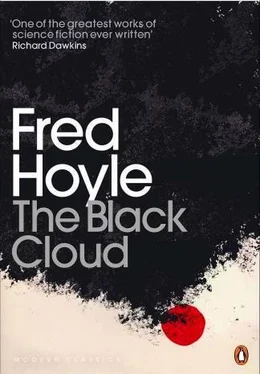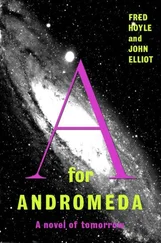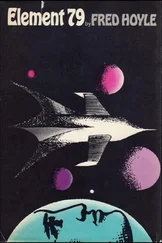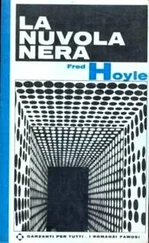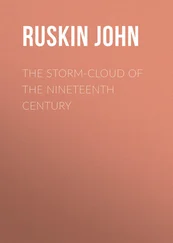Fred Hoyle - The Black Cloud
Здесь есть возможность читать онлайн «Fred Hoyle - The Black Cloud» весь текст электронной книги совершенно бесплатно (целиком полную версию без сокращений). В некоторых случаях можно слушать аудио, скачать через торрент в формате fb2 и присутствует краткое содержание. Жанр: Фантастика и фэнтези, на английском языке. Описание произведения, (предисловие) а так же отзывы посетителей доступны на портале библиотеки ЛибКат.
- Название:The Black Cloud
- Автор:
- Жанр:
- Год:неизвестен
- ISBN:нет данных
- Рейтинг книги:5 / 5. Голосов: 1
-
Избранное:Добавить в избранное
- Отзывы:
-
Ваша оценка:
- 100
- 1
- 2
- 3
- 4
- 5
The Black Cloud: краткое содержание, описание и аннотация
Предлагаем к чтению аннотацию, описание, краткое содержание или предисловие (зависит от того, что написал сам автор книги «The Black Cloud»). Если вы не нашли необходимую информацию о книге — напишите в комментариях, мы постараемся отыскать её.
The Black Cloud — читать онлайн бесплатно полную книгу (весь текст) целиком
Ниже представлен текст книги, разбитый по страницам. Система сохранения места последней прочитанной страницы, позволяет с удобством читать онлайн бесплатно книгу «The Black Cloud», без необходимости каждый раз заново искать на чём Вы остановились. Поставьте закладку, и сможете в любой момент перейти на страницу, на которой закончили чтение.
Интервал:
Закладка:
The British Government was in some difficulty to know whether or not to prevent reports appearing in the Press. It was eventually decided that no action be taken, since any suggestion of suppression could only emphasize the gravity of the situation.
Editors were surprised at the tone of the reports submitted to them. They gave orders for a lighter and more frivolous touch, and it was in banal headlines such as
APPARITION APPEARS IN SKY
CELESTIAL BLACK-OUT DISCOVERED IN N. AFRICA
NO STARS FOR CHRISTMAS, SAY ASTRONOMERS
that the first news reached the public towards the end of November. A campaign was run. Photographs came in from several observatories, both in Great Britain and elsewhere. These appeared on front pages of the dailies (on the last page of course in the case of The Times ), in some cases after a generous degree of touching up. Articles by well-known scientists were featured.
The people were informed of the existence of the highly tenuous interstellar gas, the gas that occupies the vast regions of space between the stars. Mixed up with this gas, it was pointed out, were myriads of fine grains, probably grains of ice, no more than about one hundred-thousandth part of an inch in their dimensions. It was these grains that produced the dozens of dark patches to be seen along the Milky Way. Photographs of such dark patches were displayed. The new apparition was simply one of these patches seen from near by. The fact that the solar system occasionally passed close to, or even through, such accumulations had been known to astronomers for some time. Indeed encounters of this sort formed the basis of one well-known theory of the origin of comets. Photographs of comets were also displayed.
Scientific circles were not wholly soothed by this information. The Cloud became a frequent topic of conversation and speculation in laboratories everywhere. The argument given by Weichart a year earlier was rediscovered. It was soon realized that the density of the material of the Cloud was a critical factor. The general tendency was to set this much too low, but some scientists remembered Kingsley’s remarks at the meeting of the British Astronomical Association. Significance was also attached to the disappearance from the universities of the group at Nortonstowe. It was generally felt that the circumstances justified a measure of alarm. No doubt this apprehension would have grown rapidly stronger had it not been for the increasing call of the Governments, both in Britain and elsewhere, on scientists in general. They were asked to take a part in organizing the emergency preparations that were then gaining real momentum, preparations particularly concerned with food, fuel, and shelter.
The alarm did communicate itself to the public in some degree, however. During the first fortnight of December there were signs of a growing uneasiness. Well-known columnists, demanding an informed statement from the Government, used much the same trenchant terms that they had employed several years earlier concerning the Burgess — Maclean episode. But this first wave of apprehension spent itself in a curious way. The third week of December was frosty and clear. In spite of the cold, people streamed by car and bus out of the towns to get a view of the night sky. But no apparition, no hole in the sky, was visible. Few stars could be seen at all because of bright moonlight. In vain did the Press point out that the Cloud was invisible except when projected against a background of stars. As an item of news the Cloud, for the time being at least, was dead. In any case Christmas was only a few days off.
The Government had good reason to be heartily thankful for this early demise of the Cloud, for they received in December an alarming report from Nortonstowe. The circumstances underlying this report are worth mentioning.
During the summer the organization at Nortonstowe settled down into a smooth pattern. The scientists divided into two groups, those concerned with ‘Cloud investigations’ and those concerned with the communication problems that Kingsley had explained to Marlowe. The non-scientists dealt with the business of the estate and with the building of the shelter. It was the practice for each of the three sections to hold a weekly meeting which everyone might attend. In this way it was possible to know how all affairs were developing without the necessity of going into details concerning the problems of other groups.
Marlowe worked on the ‘Cloud investigations’, using the Schmidt telescope taken from Cambridge. By October he and Roger Emerson had solved the problem of the direction of motion of the Cloud. Marlowe explained the matter in rather more detail than was perhaps necessary to the meeting that had been called to hear the latest results. He concluded:
“So it seems as if the Cloud must have practically zero angular momentum about the Sun.”
“And what in practical terms does that mean?’ asked McNeil.
“It means that both the Sun and the Earth are certain to be engulfed. If there had been any appreciable angular momentum, the Cloud would have swung aside at the last moment. But now it’s quite clear that this won’t happen. The Cloud is moving straight in at the Sun.”
“Isn’t that a bit odd, that it should just happen to be lined up so accurately on the Sun?’ persisted McNeil.
“Well, it’s got to be moving somehow,” answered Bill Barnett. “And it’s quite as likely to be moving one way as another.”
“But I can’t help feeling that it’s queer that the Cloud should just happen to be going straight for the Sun,” continued the tenacious Irishman.
Alexandrov stopped trying to persuade one of the secretaries to sit on his knee.
“Damn queer,” he announced. “But lots of things damn queer. Damn queer that Moon looks just same size as Sun. Damn queer that I’m here, isn’t it so?”
“Damned unfortunate,” muttered the secretary.
After a few minutes of further somewhat inconsequential discussion, Yvette Hedelfort stood up and addressed the meeting.
“I’m in trouble,” she announced.
There were grins and a voice was heard to remark: ‘Damn queer, isn’t it so?”
“I don’t mean that sort of trouble,” the girl continued. “I mean a proper kind of trouble. Dr Marlowe says the Cloud is made of hydrogen. Measurements give a density inside the Cloud a little greater than 10–10 gm. per cm3. I estimate that if the Earth moves through such a cloud for about one month the amount of hydrogen that will be added to our atmosphere will exceed a hundred grams for each square centimetre of the earth’s surface. Is this right, please?”
There was a silence as the implication of these remarks dawned on the meeting, or at any rate on some of the scientists.
“We’d better check that right away,” muttered Weichart. He figured on a pad of paper for perhaps five minutes.
“It’s right, I guess,” he announced.
Almost without comment the meeting broke up. Parkinson came up to Marlowe.
“But, Dr Marlowe, what does all this mean?”
“My God, isn’t it obvious? It means that enough hydrogen is going to come into the Earth’s atmosphere to combine with all the oxygen. Hydrogen and oxygen are a violently unstable chemical mixture. The whole atmosphere will blow sky-high. Trust a woman to spot that.”
Kingsley, Alexandrov, and Weichart spent the afternoon arguing. In the evening they collected Marlowe and Yvette Hedelfort and went to Parkinson’s room.
“Look, Parkinson,” began Kingsley, after drinks had been poured, “I think it’s up to you to decide what London, Washington, and all the other cities of sin are to be told. Things aren’t quite as simple as they seemed this morning. I’m afraid the hydrogen isn’t really as important as you thought, Yvette.”
Читать дальшеИнтервал:
Закладка:
Похожие книги на «The Black Cloud»
Представляем Вашему вниманию похожие книги на «The Black Cloud» списком для выбора. Мы отобрали схожую по названию и смыслу литературу в надежде предоставить читателям больше вариантов отыскать новые, интересные, ещё непрочитанные произведения.
Обсуждение, отзывы о книге «The Black Cloud» и просто собственные мнения читателей. Оставьте ваши комментарии, напишите, что Вы думаете о произведении, его смысле или главных героях. Укажите что конкретно понравилось, а что нет, и почему Вы так считаете.
